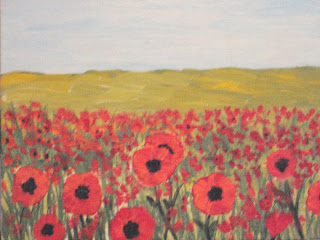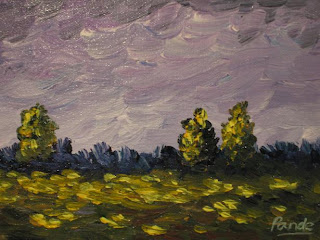
Few scenes could be simpler than the farmland of the North American midwest. Even though I grew up in an urban environment, spending over two decades in Ontario and Michigan allowed me to appreciate the endless possibilities offered by the farm scene for a landscape painter.
Dusk emphasizes that quintessential element of the American farm, the treeline often planted or retained as a windbreak, which can be set off either against the background or the foreground to create interest. The paint is laid on rather thinly in this painting allowing the canvas texture to show through. Dry brushed highlights (to which the camera does not do justice) can be seen in both the sky and the field. These are just enough to suggest a low and distant sun, perhaps even just below the horizon. The overall mood of the painting definitely evokes a sense that the day is done.
Dusk, Acrylic on canvas board, 5"X7" $40 (unframed)








